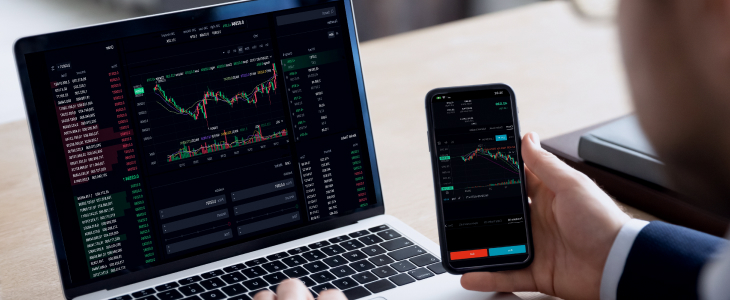
Forex Trading Basics: A Beginner’s Comprehensive Guide
Forex trading, or foreign exchange trading, is the act of exchanging one currency for another with the aim of making a profit. It’s one of the largest and most liquid markets in the world, with a daily trading volume exceeding $6 trillion. Understanding the key concepts of Forex trading is crucial for beginners who want to dip their toes into this exciting financial arena. As you embark on this journey, you may find resources such as forex trading basics beginners guide Forex Brokers in Jordan particularly helpful for choosing a trustworthy broker.
1. What is Forex Trading?
Forex trading involves the buying and selling of currency pairs. For instance, if you believe the euro will strengthen against the US dollar, you would buy the EUR/USD currency pair. If your prediction is correct, and the euro appreciates, you can sell the pair for a profit. Conversely, if the euro weakens against the dollar, you may incur a loss.
2. How the Forex Market Works
The Forex market is decentralized. Unlike stock exchanges, transactions occur over the counter (OTC) through a global network of banks, brokers, and institutions. Trading occurs 24 hours a day, five days a week, giving traders the flexibility to trade at any time. The market is characterized by different sessions based on major financial centers around the world, including London, New York, Tokyo, and Sydney.
3. Currency Pairs
In Forex trading, currencies are traded in pairs. Each currency pair consists of a base currency and a quote currency. For example, in the EUR/USD pair, the euro is the base currency, and the US dollar is the quote currency. The exchange rate indicates how much of the quote currency is needed to purchase one unit of the base currency.
4. Types of Market Orders
Traders use different types of orders to execute trades: Market orders are executed immediately at the current market price, while Limit orders are set to execute at a specific price or better. Stop-loss orders are used to limit losses on a trade, while Take-profit orders lock in profits when a specified price is reached. Understanding these orders is critical for effective risk management.
5. Leverage and Margin
One of the most appealing aspects of Forex trading is the ability to use leverage. Leverage allows traders to control a larger position than their actual investment. For example, with a leverage ratio of 100:1, a trader can control $100,000 with a mere $1,000. However, while leverage can amplify profits, it can also exacerbate losses, making risk management essential.

6. Fundamental and Technical Analysis
Traders use two primary forms of analysis to make trading decisions: Fundamental analysis involves evaluating economic indicators, news events, and geopolitical developments to predict currency movements. In contrast, Technical analysis relies on historical price data and chart patterns to identify trends and potential entry and exit points. Successful traders often use a combination of both analysis methods to gauge market sentiment.
7. Risk Management Strategies
Effective risk management is crucial for long-term success in Forex trading. Here are some strategies every trader should consider:
- Risk-to-Reward Ratio: Aim for a risk-to-reward ratio of at least 1:2, meaning you should risk $1 to make at least $2.
- Position Sizing: Determine the size of your trades based on your account balance, risk tolerance, and the specific trade setup.
- Diversification: Avoid putting all your capital into one trade. Diversifying across different currency pairs can mitigate risks.
8. Emotional Discipline
Forex trading can be emotionally taxing. Fear and greed can cloud judgment and lead to poor decisions. Establishing a solid trading plan and sticking to it can help you maintain emotional discipline. Develop rules for entering and exiting trades, and don’t be swayed by market temptations.
9. Choosing a Forex Broker
When starting your Forex trading journey, choosing the right broker is vital. Look for brokers that are regulated, offer a user-friendly trading platform, competitive spreads, and good customer service. Always read reviews and understand their fee structures before opening an account.
10. Continuous Learning
The Forex market is constantly evolving, and continuous education is key to staying ahead. Utilize online resources, join trading forums, attend webinars, and read books on Forex trading. Many traders also use demo accounts to practice trading strategies without risking real money.
Conclusion
Forex trading presents exciting opportunities for profit, but it also comes with risks. By understanding the basics, practicing sound risk management, and continually learning, beginners can set themselves up for a successful trading career. Remember, every successful trader was once a beginner. Stay patient, disciplined, and committed to your trading journey, and you’ll increase your chances of success in the Forex market.

